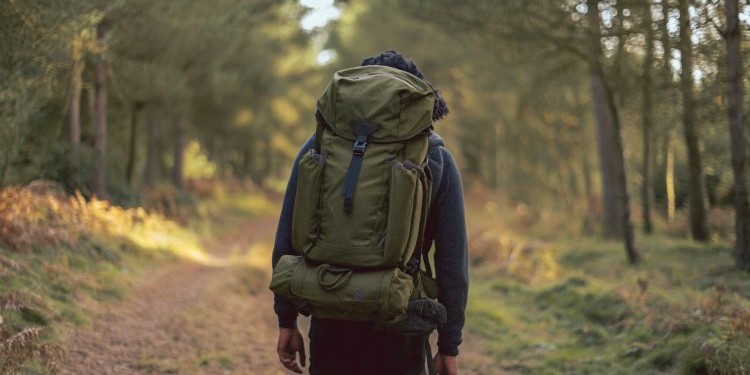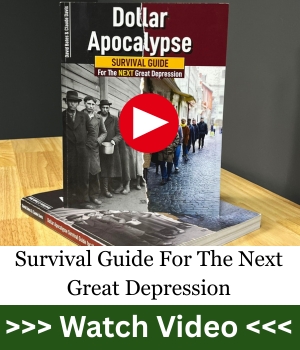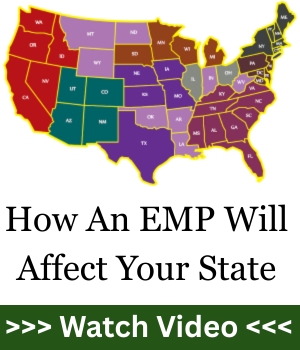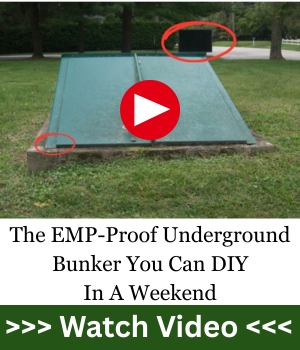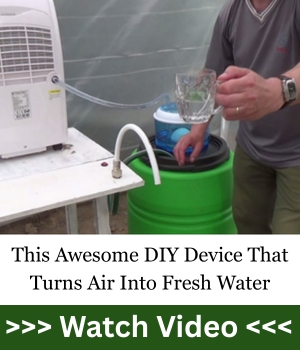Picture this: You’re 20 miles from home when everything breaks. Grid down. Roads jammed. Cell towers dead. You’ve got two feet and a prayer — unless you’ve packed smarter.
This isn’t your cushy bug-out bag filled with freeze-dried dreams. This is your Get Home Bag (GHB) — designed for one job only: Get. You. Home.
🔍 What is a Get Home Bag?
A Get Home Bag is a compact emergency kit, built for short-duration travel on foot from wherever you are — office, store, road trip — back to your home base. It’s built for stealth, speed, and survival during the first chaotic hours of a disaster.
Unlike a bug-out bag that assumes you’re evacuating indefinitely, the GHB is lean and mean. No tents. No cast iron skillets. Just mission-critical tools to navigate chaos and make it to your fallback position. It’s your lifeline when civilization hits pause.
You need it ready at all times — in your trunk, office, or under your desk. Emergencies don’t schedule themselves. The moment something goes down, you’ll be glad you’re not one of the panicked masses googling “how to survive.”
🎒 The Bag Itself: Stealth > Style
It holds your lifeline. But more importantly, it keeps you invisible. Tactical black with MOLLE straps might look cool, but it screams “I’ve got gear. Mug me.”
This is the part where most rookies blow it — either too small to be useful or so massive it might as well say “FEMA volunteer.” Your bag should blend in like a college backpack or commuter sling. If it looks like you’re carrying anything valuable, you’ve already made yourself a target.
What to look for:
- 18–30L size (at least)
- Muted colors (gray, dark blue, green)
- Reinforced shoulder straps and breathable back panel
- Zippers that won’t quit under pressure
Also avoid any logos that shout “survivalist.” You want to walk past crowds unnoticed — not branded as the last person with resources.
Recommended backpack: 5.11 Tactical Backpack or Yukon Outfitters Waterproof Backpack
💧 Water: Because You’re 72 Hours from Dehydration and Death
You lose water fast when you’re hoofing it under stress. Dehydration = brain fog, muscle cramps, poor decisions. Translation: you die tired and stupid.
A hydration plan means layers of redundancy. A steel bottle gives you boiling ability. Tablets are chemical insurance. A filter like the Sawyer Mini or LifeStraw is your long-haul option. Never assume water will be safe — even a clear mountain stream can carry parasites.
Essentials:
- 1L stainless steel water bottle
- Water purification tablets
- Compact water filter (Sawyer Mini or LifeStraw)
If your route has no water sources, consider adding a collapsible bottle or bladder for extra carry capacity. Also, stow a bandana — it can pre-filter murky water and double as a sweat rag or sling.
🍫 Food: Not a Buffet — a Battery Pack for Your Body
Calories = movement. You don’t need gourmet — you need dense, durable, and ready-to-eat.
Think fuel, not feasting. Stick to foods that require no prep, little space, and no cleanup. Military field-tested options like MREs may be heavy, but a single entrée can give you the morale push to finish a hike. Mix protein, fat, and carbs to sustain both body and mind.
Recommended:
- Millennium bars, Datrex blocks
- Tuna or chicken pouches
- Trail mix (minus meltable chocolate)
- Nut butters or shelf-stable cheese spreads
- Jerky for protein and sodium balance
Avoid perishables and anything with a short shelf life. Rotate contents every six months. Bonus: pack caffeinated gum or coffee sachets for a mental edge.
🧭 Navigation & Comms: Because Google Maps Will Be Useless
When the grid’s fried, GPS is dead weight. You need analog backups and ways to get the news without Big Tech censoring it.
A map isn’t just a piece of paper — it’s tactical advantage. Mark out alternate routes, water sources, choke points. Radios like the Kaito KA500 give you NOAA alerts, solar/crank power, and even USB phone charging. It’s your early warning system.
Pack:
- Compass with sighting mirror
- Waterproof local/regional maps
- Crank/solar NOAA emergency radio
- Power bank (solar-rechargeable preferred)
Add a Sharpie or grease pencil for map annotations. If you rely on your phone, download offline maps and store emergency numbers in your notes.
🧥 Shelter, Clothing, and PPE: You Can’t Walk Home If You’re Wet, Frozen, or Cut
Exposure is a silent killer. Hypothermia doesn’t care about your prepper cred.
Even in mild climates, wet clothes and a cold breeze can wreck your stamina. Pack for layers — base, insulation, waterproof. A tarp and cord are light but life-saving when there’s nowhere to hide from wind or rain. Gloves protect your hands while scavenging or clearing debris.
Essentials:
- Emergency bivy sack or space blanket
- Foldable tarp + 25ft paracord
- N95 or KN95 mask
- Leather work gloves
- Rain poncho or jacket
- Spare socks, shirt, and underwear
- Waterproof pants
Always pack synthetic or wool layers — cotton kills when wet. Rotate clothes seasonally, and remember: dry feet = walking feet.
We recommend that you also read this article about choosing the best paracord for survival scenarios.
🔥 Fire and Light: For Warmth, Visibility, and Psychological Survival
Fire keeps you warm, seen, and sane. Light keeps you moving and avoids twisted ankles or worse.
Multiple fire-starting methods are non-negotiable. A ferro rod lasts longer, a lighter is faster, and waterproof matches are your third backup. For light, a headlamp beats a flashlight every time — hands-free operation in an emergency is a game-changer.
Fire/Light Kit:
- Ferro rod + striker
- Mini Bic lighter
- Waterproof matches
- Headlamp + extra batteries (if necessary)
- Glow sticks for low-profile illumination
Add cotton balls soaked in petroleum jelly for tinder. Also consider a mini lantern or collapsible LED light for long shelter stays.
Extra Read: The Only Survival Fires You Should Know
🩹 First Aid & Meds: Because You Can’t Get Home Limping and Bleeding
Even a blister can cripple you. A cut can turn septic. A sprained ankle could leave you stranded.
Most drugstore kits are fluff. You need trauma supplies (tourniquet, gauze), infection control (wipes, triple antibiotic), and meds that match your reality — allergies, asthma, pain, etc. Rotate and label everything clearly. When seconds count, you won’t want to dig.
Pack:
- Israeli bandage / compression wrap
- Alcohol wipes + triple antibiotic
- Ibuprofen, antihistamines, anti-diarrheals
- Moleskin and band-aids for blisters
- Tweezers, medical tape, small scissors
- 3-day supply of personal prescriptions
Add a laminated quick-reference trauma guide. And don’t forget gloves — treating others safely matters too.
🔧 Tools & Tactical Gear: Light, Useful, Not Overkill
You don’t need a tactical tomahawk — but a solid multitool or blade can save your life.
Avoid the Hollywood stuff. Focus on reliability. A good multitool does everything from opening cans to fixing gear. Paracord isn’t just rope — it’s a saw, sling, fishing line, shoelace. Duct tape fixes holes, binds splints, and even closes wounds in a pinch.
Must-Haves:
- Quality multitool (Leatherman, Gerber)
- Folding knife (lockable blade)
- 25–50 ft of paracord (already highlighted)
- Flat-wrapped duct tape (5–10 ft)
Also consider:
🧼 Hygiene: Because Staying Clean = Staying Alive
Hygiene isn’t luxury. It’s infection control. It’s mental stability.
In crisis, your immune system’s already under fire. Don’t give bacteria a free ride. Baby wipes are a great all-around option. TP can double as tinder. Sanitation may not be sexy, but trench foot and dysentery are way worse.
Essentials:
- Compressed or travel toilet paper
- Biodegradable soap or wipes
- Toothbrush + travel toothpaste
- Hand sanitizer (60%+ alcohol)
- Waste bag or folding trowel
Also consider menstrual hygiene supplies, a comb or razor, and a small microfiber towel. Cleanliness = confidence.
We also recommend that you learn what you really need in your SHTF first aid kit!
📄 Documents & Identity: Your Paper Trail When the Digital One Dies
Phones die. Wallets get lost. Cops don’t care about excuses during martial law.
If you can’t prove who you are, you’re nobody. Keep hard copies of key docs laminated or in a waterproof bag. Include a small notebook to track routes, encounters, or leave notes. Data on a USB drive with encrypted files can save your bacon if you need to rebuild later.
What to include:
- Copy of ID, passport, insurance
- Emergency contact list
- USB stick with encrypted data (PDFs, manuals, scans)
- $100–200 in small bills
- Notebook and pen
Write down your medical allergies and blood type. It could save your life if you’re unconscious.
🧠 Final Tips
Test your gear before you need it. Don’t be the guy trying to learn a compass while fleeing a riot.
Customize for climate, terrain, and personal needs (kids, pets, meds). Refresh food and water every 6 months. Walk your route. Know your local choke points, bridges, rail lines, and alternate exits. In collapse, knowledge walks — panic dies in place.
And always remember that knowledge is your biggest ally. If you haven’t already, check out the Best Prepper Books you could have and get ready. Remember, it is a question of when, not if!
🚨 Bottom Line
A Get Home Bag isn’t paranoia. It’s math. Grid down + long commute = you on foot. Your bag determines if you make it or end up on the missing persons list.
Build it. Know it. Carry it. Freedom doesn’t live in convenience — it lives in preparation.

